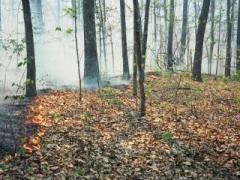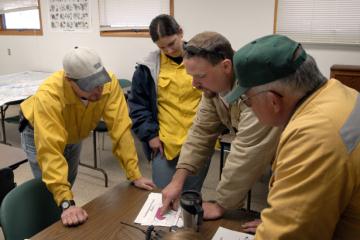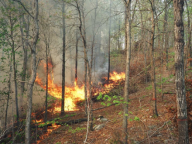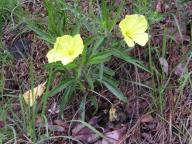
Prescribed fire is an effective tool for managing vegetation. Prescribed fire can be used to improve forage for livestock and wildlife, control both non-native and native invasive species, remove leaf litter, reduce logging debris, improve tree regeneration, and manage vegetation competion. Fire is an excellent tool for vegetation management, but prescribed fires need to be planned to consistently achieve the beneficial effects.
A successful prescribed fire program involves three steps:
1) planning-including evaluating the condition of vegetation and vegetation management goals
2) safe and effective prescribed fire execution
3) sound vegetation management pre-, during, and post-prescribed fire treatment. A prescribed fire plan is an essential part of the process for preparing to use prescribed fire.
The prescribed fire plan includes prescribed fire objectives, weather conditions, plans for fire control, identification of authorities to notify prior to prescribed fire ignition, prescribed fire ignition plans, and post-prescribed fire plans. Below are links to sites with information on prescribed fire planning: Michigan Department of Natural Resources, Florida Forest Service, U.S. Forest Service Southern Research Station, Georgia Forestry Commission, New Hampshire Prescribed Fire Council, and Oklahoma State University.
Determining Land Management Objectives
 Planning to use prescribed fire starts with determining what the land management objectives are and deciding if prescribed fire will help achieve the objectives. This process can take some time, but it is very important for determining where, when, and how prescribed fire can be used. Once it is determined that prescribed fire is an appropriate tool to meet the objectives, then a prescribed fire plan should be prepared. The prescribed fire plan is a document that describes the area to be treated with fire, the prescribed fire objectives, and a plan that includes a combination of prescribed fire ignition techniques, season of burn, and weather conditions to meet the defined objectives. Setting the objectives of the prescribed fire is a very important step in prescribed fire use.
Planning to use prescribed fire starts with determining what the land management objectives are and deciding if prescribed fire will help achieve the objectives. This process can take some time, but it is very important for determining where, when, and how prescribed fire can be used. Once it is determined that prescribed fire is an appropriate tool to meet the objectives, then a prescribed fire plan should be prepared. The prescribed fire plan is a document that describes the area to be treated with fire, the prescribed fire objectives, and a plan that includes a combination of prescribed fire ignition techniques, season of burn, and weather conditions to meet the defined objectives. Setting the objectives of the prescribed fire is a very important step in prescribed fire use.
Prescribed fire objectives need to provide enough detail that the prescribed fire can be evaluated to determine if it was successful. Objectives can be both short- and long-term. Short-term objectives should be quantifiable.
Short-Term Objectives
- Reduce leaf litter by 70%
- Reduce understory shrubs by 50%
- Consume 60% of tree branches less than 1inch in diameter from logging debris.
- Consume 90% of fine fuels.
- Increase grass cover by 20%
- Increase native plant species richness by 5 species.
Long-Term Objectives
Long-term objectives can include the desired future conditions that the landowner is trying to achieve by using prescribed fire. Examples of long-term objectives are:
- Promote native grasses.
- Reduce the cover of exotic species
- Restore woodland structure
- Convert site from hardwoods to softwoods
- Improve forage for livestock



Additional Literature:
Fire in southern forests: http://www.treesearch.fs.fed.us/pubs/6462
Fire in Ponderosa Pine Forests in the Pacific Northwest: http://www.treesearch.fs.fed.us/pubs/21805
Prescribed fire effects literature review and synthesis: http://www.treesearch.fs.fed.us/pubs/33628
